
Nonprofits had to react quickly and adapt their internal processes when the Coronavirus hit last March—one being how they hired and onboarded new employees. The logistics of virtual onboarding may seem daunting but how you welcome a new hire is crucial to the success of both the organization and the employee.
This informative webinar recording provides strategies for streamlining your onboarding processes, engaging new employees and crafting a remote employee experience that reflects and supports your company culture.
Watch now and you’ll learn the following key strategies:
You have another opportunity to attend this webinar on February 23rd—be sure to register today to secure your spot! Even if you can’t attend the live session, when you register, you’ll receive the recording and presentation slides as soon as they become available.
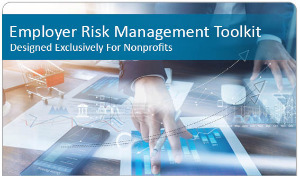
The Coronavirus has presented a whole new set of challenges to the nonprofit sector—one of the most prevalent being the impact of unpredicted unemployment costs. To help nonprofit employers address (and avoid) future UI risks, we’ve compiled our top resources to create the 2020 Employer Risk Management Toolkit.
As nonprofits continue to struggle in the current economic environment, it’s more important than ever to recognize and manage unemployment risk. This free toolkit includes unemployment cost management strategies, a UI Integrity infographic, fraud prevention tips, and more:
Want access to more nonprofit-specific tips, toolkits and webinars? Sign up for our nonprofit eNewsletter today!

To help nonprofits combat the most prevalent day-to-day workforce challenges caused by COVID-19, UST has launched a NEW interactive webinar series called “UST Live.” We’re collaborating with reputable nonprofit leaders & HR experts across the U.S. to bring their collective expertise to you—live—in hour-long, virtual panel discussions.
In our first UST Live webinar, the panel discussed the innovative employee management strategies that are being used for onboarding, training, employee development and employee engagement during these difficult times. Plus, the panel answered attendee’s questions related to HR best practices and employee relations management.
Watch now to discover:
Upcoming UST Live Webinars: This webinar series was designed to equip nonprofits with the strategies and resources they need to survive (and thrive) throughout this pandemic. Be sure to register for our next UST webinars—scheduled for October 15th and November 19th—where we’ll discuss how to develop a sustainable strategy for 2021 as well as innovative recruitment best practices.
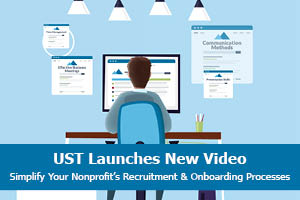
For over three decades, UST has been providing nonprofits with HR solutions that help manage day-to-day workforce issues, ensure compliance, and maximize employee bandwidth. By offering essential tools such as the job description builder, customizable online employee training tracks, and onboarding checklist, UST helps nonprofits maximize productivity and increase employee engagement.
As part of UST’s ongoing efforts to strengthen and educate 501(c)(3) organizations, we’re excited to announce the recent launch of our newest short video—designed to provide a snapshot of UST’s cloud-based HR platform. About a minute long, this video highlights tools that allow nonprofit employers to navigate the many complex realms of human resource management with ease—including recruitment and employee training.
Check out our newest video today to discover how our virtual HR services can help streamline your nonprofit’s HR processes and simplify day-to-day tasks—so you can focus more time on what matters most: keeping your mission-driven initiatives moving forward.
Test drive UST’s online HR platform today and explore some of these essential HR checklists and training solutions for yourself! Sign up for your FREE 60-Day HR Trial here!
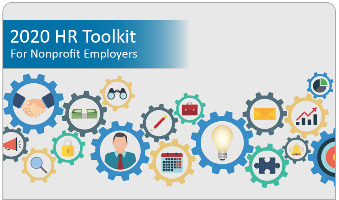
Here at UST we’ve put together our Top 10 Guides for 2020 Nonprofit Human Resource management. And for a limited time, we’re giving them away for FREE.
Since 1983, UST has provided nonprofits with the latest HR resources in an effort to help organizations stay compliant, maximize employee bandwidth and reduce overhead costs. This toolkit includes updated 2020 state and local minimum wage data and recordkeeping requirements, as well as a variety of checklists to ensure compliance. Plus, you can discover facts surrounding COVID-19 laws and the latest workplace protocol.
Still have questions? You can get a free 60-day trial of UST HR Workplace, powered by ThinkHR. This cloud-based HR platform offers a live expert hotline, 300+ online training and compliance courses, compensation tools, employee handbook builders and employee classification step-by-step guides. Set up your ThinkHR Trial today!
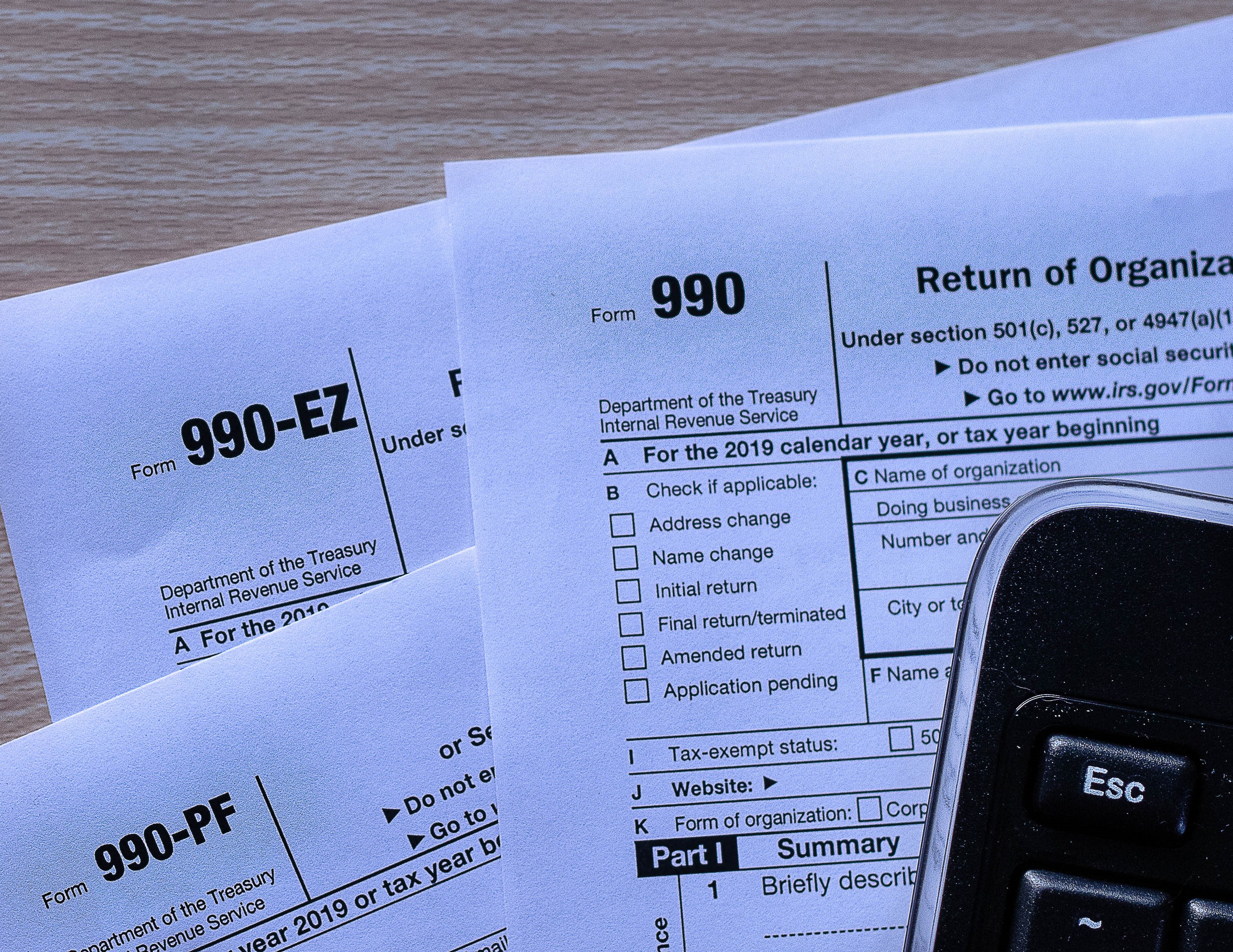
Nobody likes filing taxes or paying them for that matter but don’t let that put your nonprofit at risk. While your organization may be federally tax-exempt, you are still required to file Form 990 with the IRS. This is the only way the federal government can ensure exempt organizations are conducting business in a way that is consistent with their public responsibilities. It also ensures your compliance and evaluates how your nonprofit is doing financially while allowing the public to see information about a nonprofit mission and programs.
The 990 provides a transparent glance into the organization and its accomplishments. Allowing the public to see, not only, the gross revenue generated but where the revenue came from. When individuals, donors or job seekers are trying to find out as much as possible about a nonprofit through their own research efforts, this is an excellent source of information since it serves as a tool to evaluate the best charities to support.
It’s important that you file and file on time. Your 990 is due by the 15th of the 5th month after your accounting period ends. For example, if your fiscal year ends on December 31st, your 990 would be due by May 15th of the following year. Which form you file depends on your gross receipts—you can determine which 990 form to file by visiting the IRS website to see which form category your nonprofit falls under. Take the time to complete this form and avoid losing your exempt status with the IRS—there is no appeal process. If you’re unsure of your status, check the IRS website and get back on track, you will thank yourself later.
Understanding the journey, planning ahead and being proactive, will save you time and make the filing process much easier. Following the below guidelines can help with that preparation:
Since 990 forms are public documents and widely available, nonprofits should be diligent about filing them out correctly and filing them on time. Remember, a nonprofit’s 990 provides valuable information that speaks directly to your organizations status so the extra time spent preparing will pay off in the end. Don’t think of it as another menial task on your list of things to do but rather consider how it can affect those researching who you are—ultimately impacting the communities you serve.
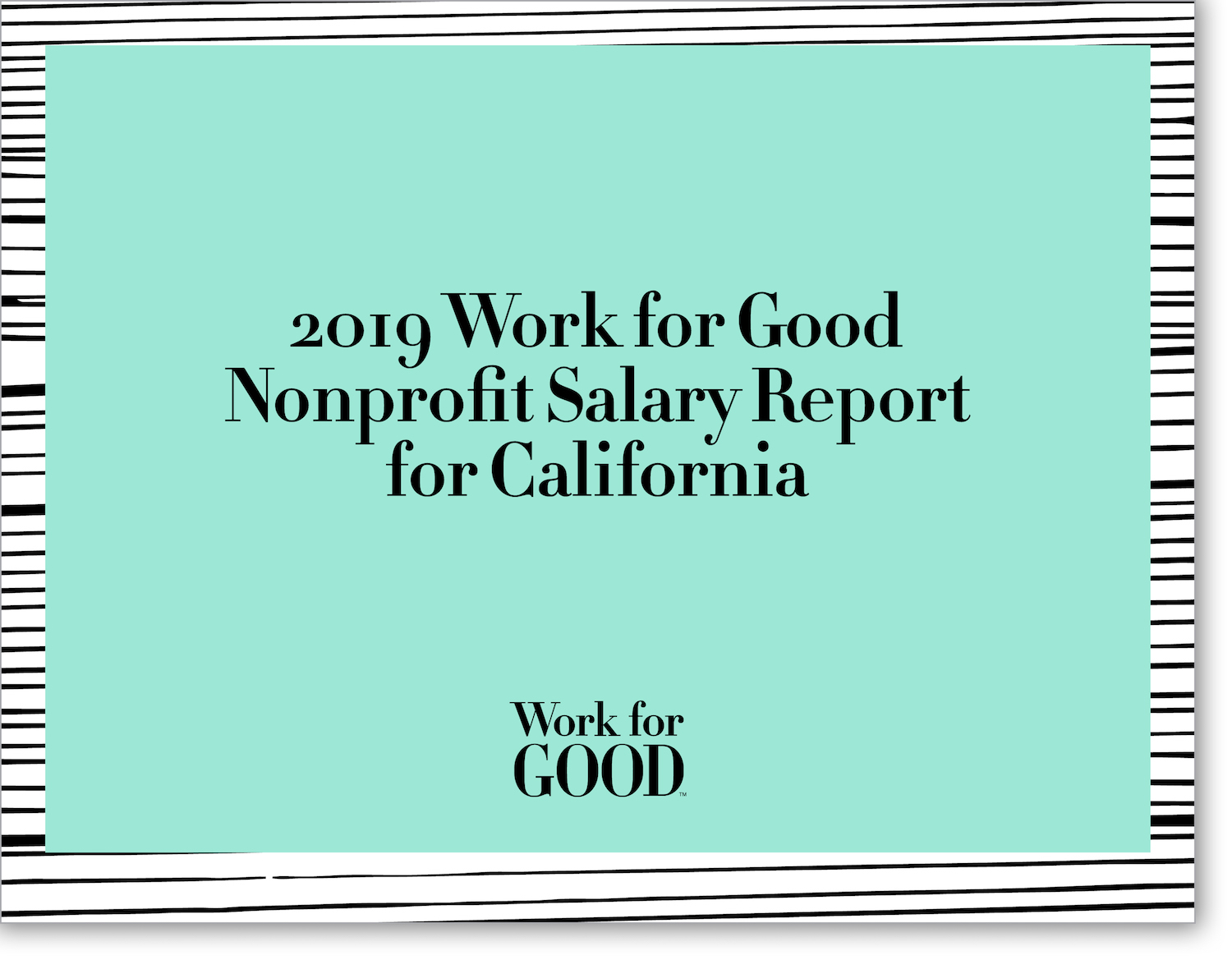
Employing the third largest workforce with the third largest employee payroll, the nonprofit sector is quickly gaining momentum in the work arena. Work for Good recently released a new eBook, the 2019 Nonprofit Salary Report for California, based on results from an extensive survey of nonprofit professionals in the state. This eBook delivers comprehensive sector salary benchmarking based on nearly 10,000 positions at nonprofit organizations in the state of California. Those are impressive statistics and this report breaks down those numbers for you—helping in your quest for greater impact and organizational excellence. Download your copy today!
Different things inspire different people to work for nonprofit organizations—it can be a personal tie to the cause, the desire to make a difference, the work environment, or maybe, it’s the idea of working with really like-minded people. Whatever the reason is, it typically isn’t for stellar compensation.
While some nonprofits have the funds to offer exceptional compensation, many just don’t—there are a lot of reasons why nonprofit organizations struggle with offering competitive compensation packages but the most common are minimal funding and other spending priorities. We know there are many non-monetary rewards of working for a nonprofit, but creating the best compensation package possible can make the difference between attracting and retaining qualified candidates or suffering from high turnover. It’s important to recognize that nonprofit employers compete with for-profit employers all the time when it comes to finding talented job candidates. Equally important to recognize is that compensation isn’t just about salary.
Like all other employers, tax-exempt charitable nonprofits are required to follow federal and state wage and hour laws that include minimum wage requirements. To maintain their tax-exempt status, nonprofit organizations need to ensure that compensation is reasonable and not in excess. Performing your own data research to find out what the “going rate” is for a given position can be extremely helpful in ensuring that you’re aligned with other nonprofits in the same geographic area with a similar budget and mission.
Here are some things to consider when creating a desirable compensation package:
1 . Incentive Bonuses – Ensure expectations are clear surrounding any bonus through corporate communications that explain how bonuses are recognized as a discretionary gift to a regular salary–dependent upon budget limitations, and provided in recognition of an employee’s extra-efforts or exceptional performance.
2. Work from Home Opportunities – Provide employees the option to telecommute in an effort to save time and money on commuting back and forth from work. Make sure that you have a clear policy surrounding a telecommuting program to avoid any possible issues in the future.
3. Recognition Awards – Recognize employee’s successes on a quarterly basis by rewarding them with an additional perk such as a gift card to a local hot spot or perhaps a paid day off. This type of recognition carries extra meaning in building trust and loyalty.
4. Additional Time off – Offering additional time off options such as a floating holiday or a paid birthday can go a long way in making employees feel valued and cared for.
5. Perks and Memberships – More and more companies are providing their associates free memberships to discounted programs and offering special offers.
6. Increase Training Spending – Consider paying for certification programs, learning materials and conferences. Create more budget space for investing in employees.
Being creative with your compensation package at a budget restricted nonprofit can be less expensive and often better received than a raise, so put on your thinking caps and leave no stone unturned. R emember, money alone will not keep employees engaged so make sure you show them some appreciation.
Nonprofits play a vital role in society by indirectly boosting the economy. Just like their for-profit counterparts, they have payroll, pay mortgages and utilities and have overhead costs. Unlike for-profits, they rely primarily on grants, donors and the community for financial support – making it all the more important that they understand the financial risks they face.
Earlier this year, the findings from a study put out by SeaChange Capital Partners, Oliver Wyman and GuideStar, “The Financial Health of the United States Nonprofit Sector: Facts and Observations,” were released and the results signaled an urgency for improved risk management to reduce the likelihood of financial distress within the sector.
Some key takeaways from this report include:
If you missed it, download your copy today and learn how you can either put a holistic risk management framework in place or enhance your current risk management practices!
Question: Can we maintain a zero-tolerance marijuana use policy in our workplace if medical marijuana use is legal in the state?
Answer: Yes, you can. Employers have an absolute right to maintain a drug-free workplace and do not have to allow or tolerate drug use or intoxication in the workplace. Although some states permit the use of marijuana for both medicinal and recreational purposes, most state laws provide exemptions for employers to prohibit the use of marijuana in the workplace. If you maintain a drug-free workplace, then your employees may be subject to discipline and/or termination when working under the influence of marijuana (i.e., on-the-job intoxication). In states where marijuana use has been legalized for medical or recreational purposes, employers may elect to establish intoxication standards for marijuana metabolites, rather than imposing discipline for any presence of the drug. However, this standard must be applied consistently and regularly to all employees.
As of February 2016, marijuana continues to be an illegal drug under federal law (which trumps state laws), and employers are not required to permit on-the-job use of or marijuana intoxication by employees or applicants. You may discipline employees who are legally using marijuana under state law but who are in violation of your workplace policy, because under the law, employees are not protected from being fired for failing a drug test.
Alternatively, you may elect to accommodate your employee’s medical marijuana use, but the Americans with Disabilities Act (ADA) does not require you to reasonably accommodate current unlawful drug use. Employees who claim disability discrimination for their medical marijuana use may attempt to file under the ADA. However, the ADA excludes current illegal drug users from protection; therefore, employers are free to conduct drug tests on employees, subject to certain limitations, to detect the presence of illegal drug use.
Refer to your state’s laws on employer rights and medical marijuana law. Additionally, you may want to update your policies to ensure you are clear about whether you will accommodate marijuana use in the workplace and the subsequent action should an employee be found using marijuana.
Finally, keep in mind that this issue can be complicated. When in doubt, seek legal counsel to ensure compliance.
Q&A provided by ThinkHR, powering the UST HR Workplace for nonprofit HR teams. Have HR questions? Sign your nonprofit up for a free 30-day trial here.

UST maintains a secure site. This means that information we obtain from you in the process of enrolling is protected and cannot be viewed by others. Information about your agency is provided to our various service providers once you enroll in UST for the purpose of providing you with the best possible service. Your information will never be sold or rented to other entities that are not affiliated with UST. Agencies that are actively enrolled in UST are listed for review by other agencies, UST’s sponsors and potential participants, but no information specific to your agency can be reviewed by anyone not affiliated with UST and not otherwise engaged in providing services to you except as required by law or valid legal process.
Your use of this site and the provision of basic information constitute your consent for UST to use the information supplied.
UST may collect generic information about overall website traffic, and use other analytical information and tools to help us improve our website and provide the best possible information and service. As you browse UST’s website, cookies may also be placed on your computer so that we can better understand what information our visitors are most interested in, and to help direct you to other relevant information. These cookies do not collect personal information such as your name, email, postal address or phone number. To opt out of some of these cookies, click here. If you are a Twitter user, and prefer not to have Twitter ad content tailored to you, learn more here.
Further, our website may contain links to other sites. Anytime you connect to another website, their respective privacy policy will apply and UST is not responsible for the privacy practices of others.
This Privacy Policy and the Terms of Use for our site is subject to change.
UST maintains a secure site. This means that information we obtain from you in the process of enrolling is protected and cannot be viewed by others. Information about your agency is provided to our various service providers once you enroll in UST for the purpose of providing you with the best possible service. Your information will never be sold or rented to other entities that are not affiliated with UST. Agencies that are actively enrolled in UST are listed for review by other agencies, UST’s sponsors and potential participants, but no information specific to your agency can be reviewed by anyone not affiliated with UST and not otherwise engaged in providing services to you except as required by law or valid legal process.
Your use of this site and the provision of basic information constitute your consent for UST to use the information supplied.
UST may collect generic information about overall website traffic, and use other analytical information and tools to help us improve our website and provide the best possible information and service. As you browse UST’s website, cookies may also be placed on your computer so that we can better understand what information our visitors are most interested in, and to help direct you to other relevant information. These cookies do not collect personal information such as your name, email, postal address or phone number. To opt out of some of these cookies, click here. If you are a Twitter user, and prefer not to have Twitter ad content tailored to you, learn more here.
Further, our website may contain links to other sites. Anytime you connect to another website, their respective privacy policy will apply and UST is not responsible for the privacy practices of others.
This Privacy Policy and the Terms of Use for our site is subject to change.